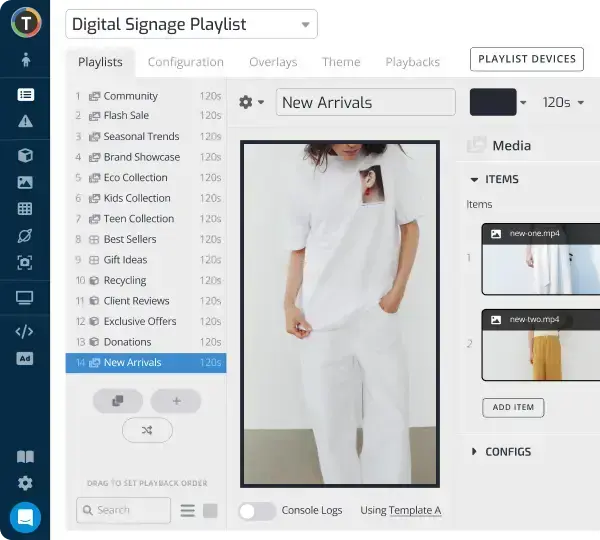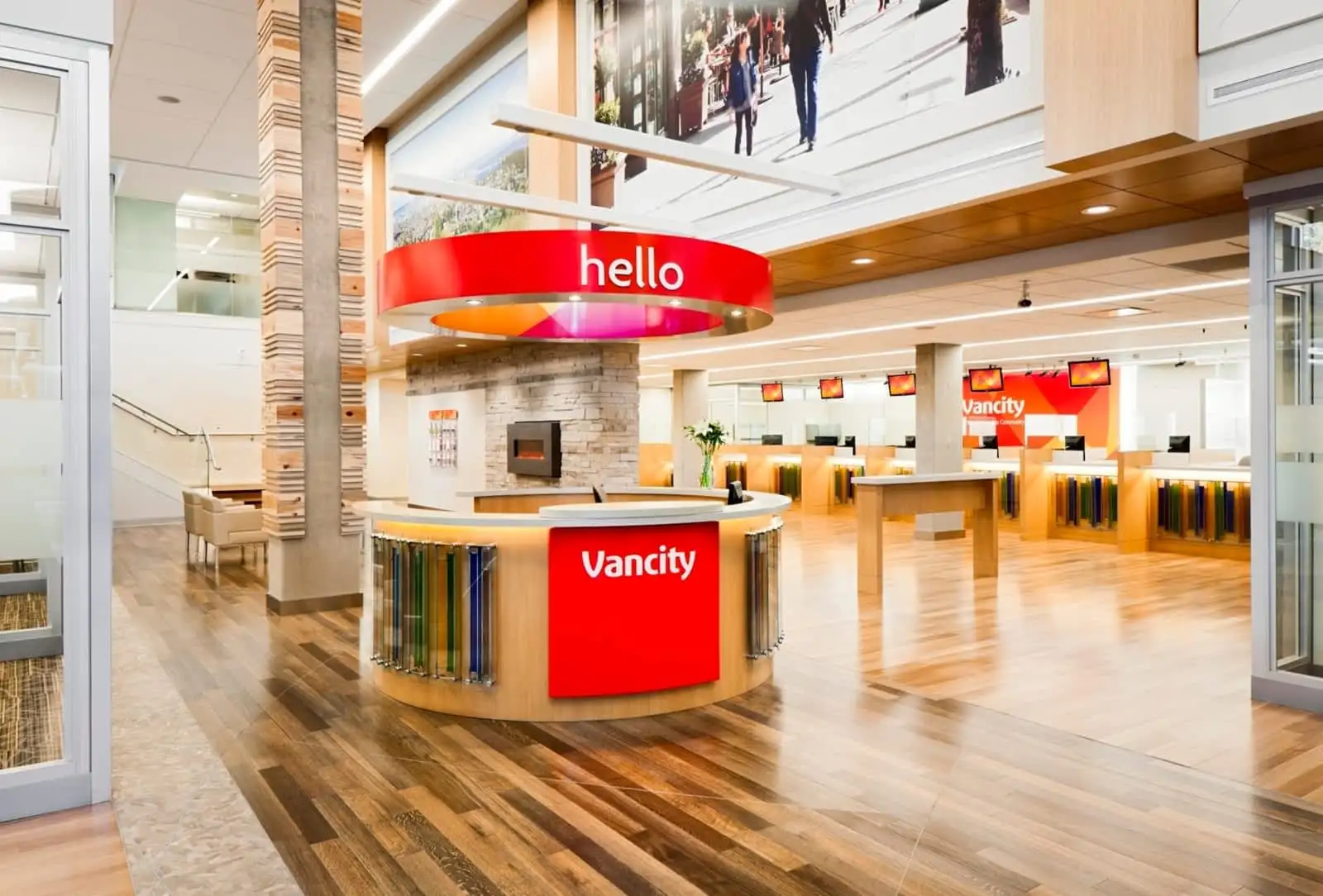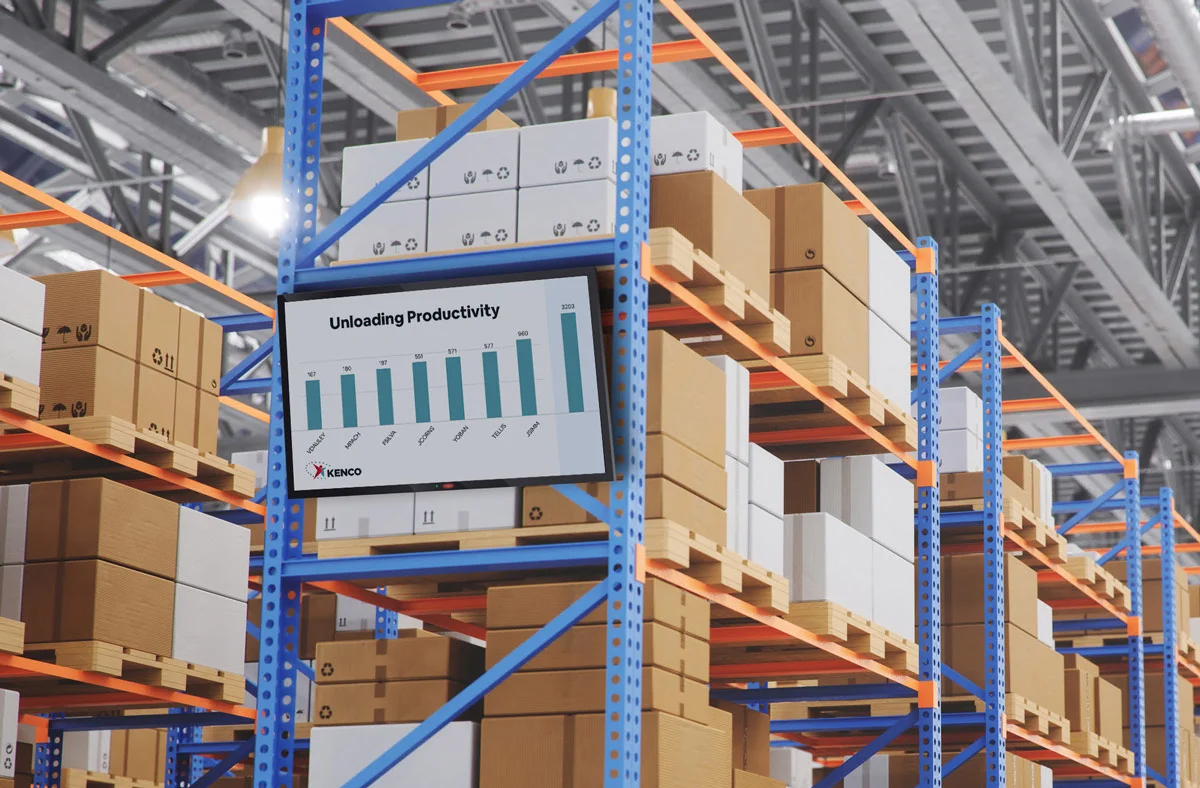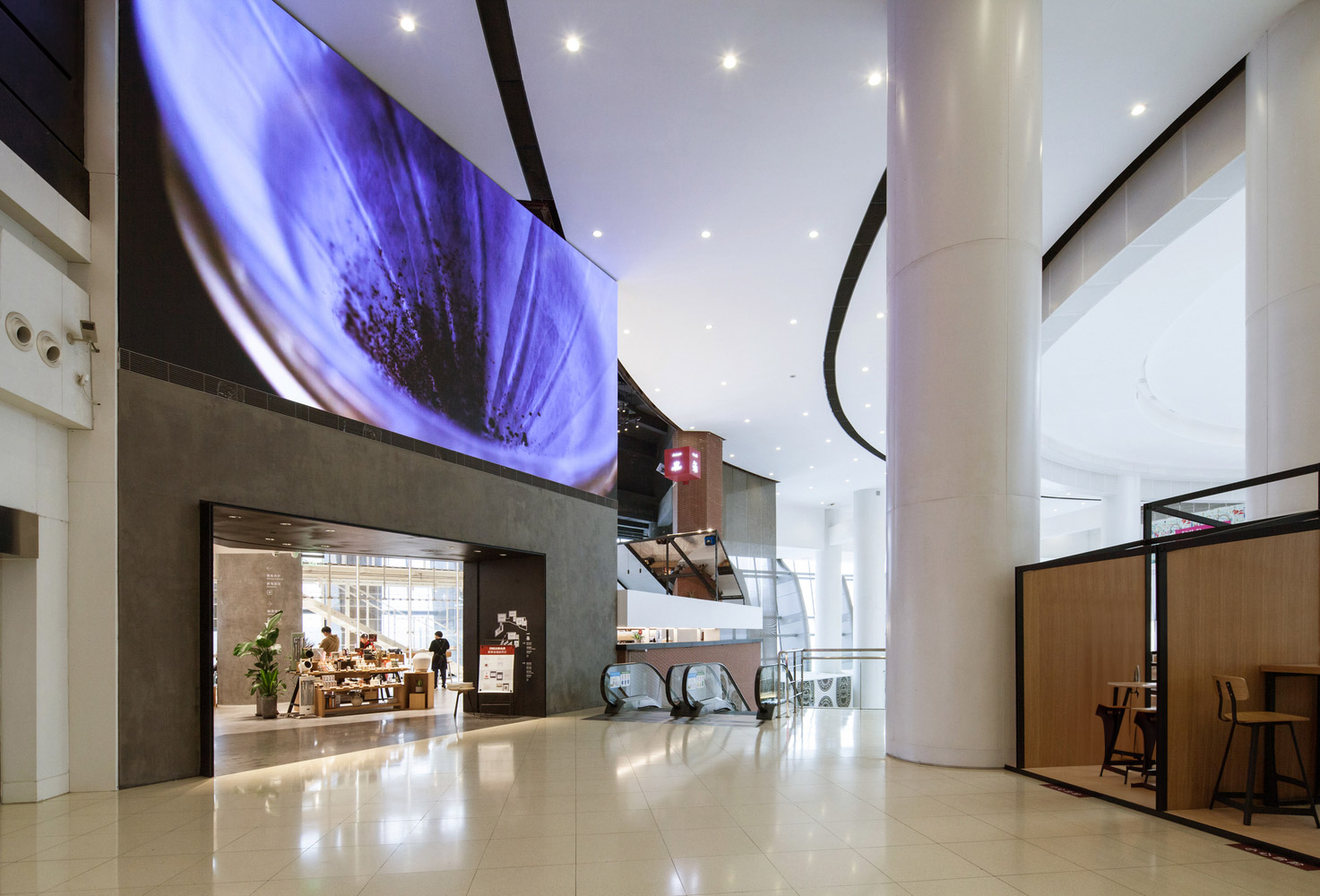Five Key Trends Shaping Enterprise Digital Signage
WRITTEN BY: TelemetryTV, 02-13-2025
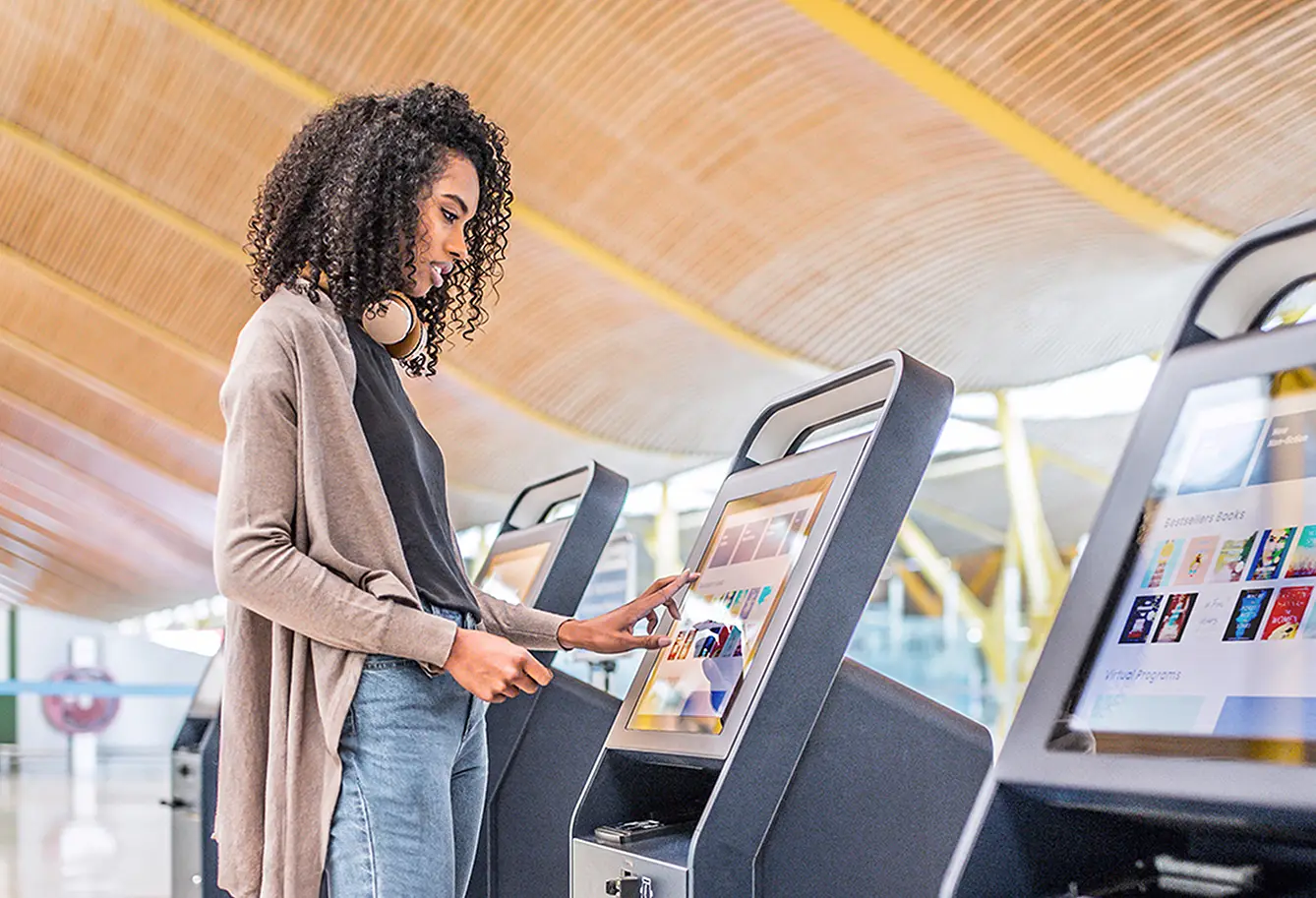
Digital signage has come a long way from simple screens cycling through ads. Today, enterprise businesses are embracing data-driven, interactive displays that personalize experiences and streamline operations on a massive scale. From retail and banking to quick-service restaurants (QSR), savvy organizations are deploying digital signage software to captivate customers and support their broader business goals. Industry leaders such as Starbucks, Boston Consulting Group (BCG), Amazon, and Carvana all demonstrate how modern signage can elevate engagement and efficiency in different settings. Below is a closer look at the latest trends—and how medium and large-sized networks stand to benefit by choosing the right solution.
Five Key Trends Shaping Modern Enterprise Digital Signage
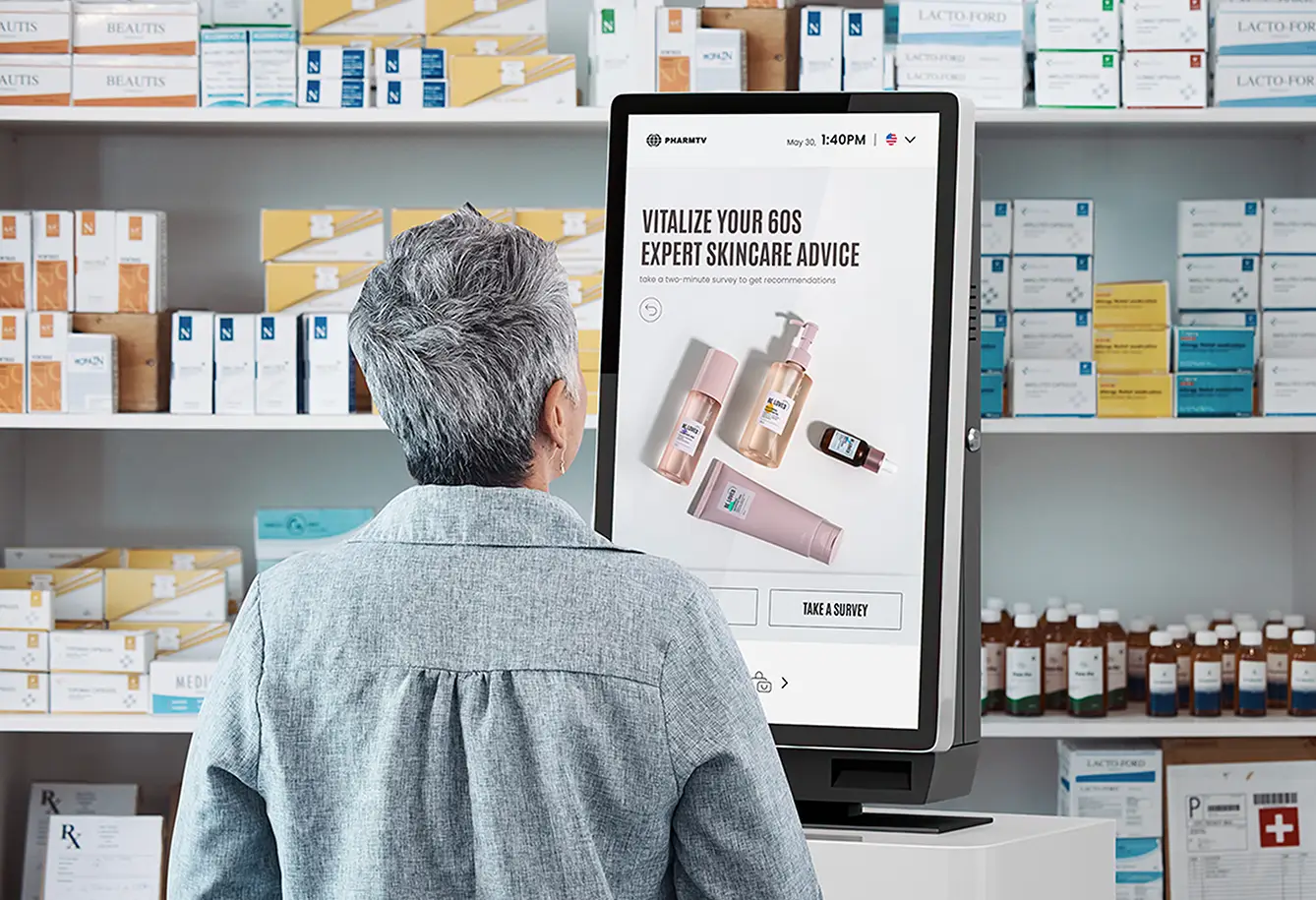
1. AI-Driven Personalization
Gone are the days of static, one-size-fits-all messaging. Enterprises increasingly leverage artificial intelligence to deliver tailored on-screen content in real time. By tapping into factors like customer demographics, local weather, and even loyalty app data, businesses can show ads or product suggestions that resonate with each viewer. A coffee chain might promote iced beverages on a hot afternoon or recommend popular seasonal items to loyalty members. This level of personalization helps reduce irrelevant noise and prompts engagement.
2. Interactive and Immersive Displays
As digital signage becomes more advanced, viewers expect more than a passive experience. Interactive screens and kiosks invite customers to participate—browsing catalogs, entering information, or engaging with gamified elements. Banks, for example, use touchscreen lobby displays to explain financial products and reduce perceived wait times. Retailers embed interactive screens in flagship stores that let shoppers explore extended product lines or access personalized recommendations. These immersive elements not only boost satisfaction but also strengthen brand perception.
3. Data-Rich, Dynamic Content
Behind every engaging display is a wealth of real-time data. Retailers can sync their digital signage software with inventory databases, point-of-sale systems, and marketing platforms to instantly update prices, promotions, or availability across all locations. Banks can display up-to-the-minute information on loan rates or financial news. In QSR settings, menu boards automatically reflect limited-time offers or local favorites. By harnessing data, enterprises maintain consistency, relevance, and agility—essential traits in today’s markets.
4. Omnichannel Integration
Digital signage increasingly sits at the center of an omnichannel customer journey. Physical screens in stores, banks, and restaurants tie into apps, websites, and social media to deliver consistent messaging. A shopper browsing online can see their wishlist items featured on an in-store kiosk, while a restaurant loyalty program might trigger drive-thru menu boards to spotlight personalized deals. Amazon, for instance, has extended its e-commerce advertising network into physical retail spaces—blending digital advertising principles with in-store signage to serve highly targeted promotions. This convergence of online and offline channels is ushering in a new era of cohesive brand experiences.
5. Enterprise-Grade Management and Security
Scaling digital signage across hundreds or thousands of endpoints demands robust features: centralized control, comprehensive analytics, and strict security protocols. For a global retailer or financial institution, it’s critical to instantly update all screens without risking content errors or downtime. Modern digital signage software addresses these challenges with cloud-based dashboards, role-based permissions, and encryption to protect both content and user data. Enterprises can orchestrate large networks, monitor device health, and override screens in emergencies—all from a single, secure platform.
Retail: Turning Physical Stores into Immersive Media Hubs
Engaging the Connected Shopper
Retailers account for a significant share of digital signage deployments, using displays to captivate shoppers and showcase offerings. Bright video walls near entrances, digital posters highlighting sales, and interactive kiosks are all designed to pull customers deeper into the store. An estimated 67% of consumers say they have made an unplanned purchase due to eye-catching digital content, underscoring its power to influence buying behavior.
Real-Time Updates and Endless Aisles
Digital signage software enables retailers to manage promotions centrally and roll them out instantly. Price changes, seasonal ads, and local events can all be reflected on-screen without the cost or delay of printing. Additionally, “endless aisle” kiosks let shoppers order items that aren’t available in-store, bridging the gap between physical locations and the retailer’s full online inventory. This convenience can reduce lost sales and encourage larger transactions.
Personalizing the Customer Journey
Many retailers now integrate loyalty and customer analytics into their signage. Some stores tailor on-screen messages to local demographics or even show product recommendations based on purchase history. Starbucks—widely known for its digital transformation—continues to roll out data-driven menu boards that highlight timely, location-specific offers. The result is a more relevant, personal touch that reinforces brand loyalty.
Monetizing In-Store Networks
Beyond enhancing the shopping experience, retailers see an opportunity to monetize digital signage by selling ad space to brand partners. Amazon’s in-store grocery displays, for instance, let product manufacturers advertise directly to shoppers at the point of decision. By leveraging the same targeting expertise used online, retailers generate a new revenue stream while delivering more relevant ads that catch customers’ attention in the aisle.
Banking: Redefining Branches with Digital-First Experiences
Transforming the Traditional Branch
Amid the rise of mobile and online banking, physical branches are being reimagined to deliver advisory and service-oriented experiences. Modern banks leverage digital signage software to greet customers with personalized information, guide them through complex products, and share up-to-date rates. What once required racks of brochures can now be housed in dynamic, visually appealing screens that refresh in real time.
Cutting Perceived Wait Times
A major benefit of digital signage is its impact on wait times. People feel less impatient when a queue area features engaging content—financial tips, community news, or even interactive finance calculators. Surveys show effective digital signage in bank lobbies can reduce perceived wait times by over 30%, boosting customer satisfaction.
Cross-Selling and Education
Bank customers often use branch visits to explore mortgage options, investment opportunities, or other complex services. Digital signage can highlight relevant products and promotions, helping customers discover offerings they might not have considered. Internal research at some financial institutions indicates that dynamic digital displays boost product uptake and generate stronger brand loyalty than static flyers or posters.
Enterprise Control and Compliance
Regulatory guidelines make centralized oversight crucial for banks. Digital signage software with built-in workflows lets a bank’s corporate office ensure every screen runs approved content. Real-time monitoring also helps identify potential failures—such as a blank display or outdated campaign—before it damages the customer experience. With robust security and compliance features, large networks can innovate without compromising data protection.
Quick Service Restaurants: Optimizing Menus and Customer Journeys
The Shift to Digital Menu Boards
Quick-service restaurants increasingly rely on digital menu boards to stay agile in a competitive market. Dynamic displays let operators rotate daypart menus and promote limited-time items with ease. Some restaurant groups report that switching from static boards to digital has raised sales of promoted items by 5–8%, thanks to the eye-catching visuals and real-time updates.
Personalizing Drive-Thrus
Many QSRs generate most of their revenue from drive-thru service, making digital signage indispensable for capturing attention in a short window. AI-powered systems can analyze data—such as weather or time of day—to display the most relevant offers. Starbucks’ push to personalize drive-thru menu boards based on loyalty data is a prime example, letting them suggest beverages or snacks tailored to customer preferences.
Streamlined Customer Experience
Whether indoors or at the drive-thru, QSRs lean on digital displays to speed up service and encourage add-on purchases. Bright, easy-to-read menus reduce ordering friction, while promotional screens at the counter highlight combos or desserts. Self-service kiosks, often integrated with digital menu software, give customers control over customization, which can boost order size and overall satisfaction.
Real-Time Operational Flexibility
From a management standpoint, updating menus across hundreds or thousands of locations can be done with a few clicks. If a popular dish sells out, operators can instantly remove it. A new special can launch nationwide at midnight without needing staff to swap menu inserts. This level of control saves on printing costs and ensures consistent branding across the entire chain.
Why Enterprise-Grade Software Matters: The TelemetryTV Approach
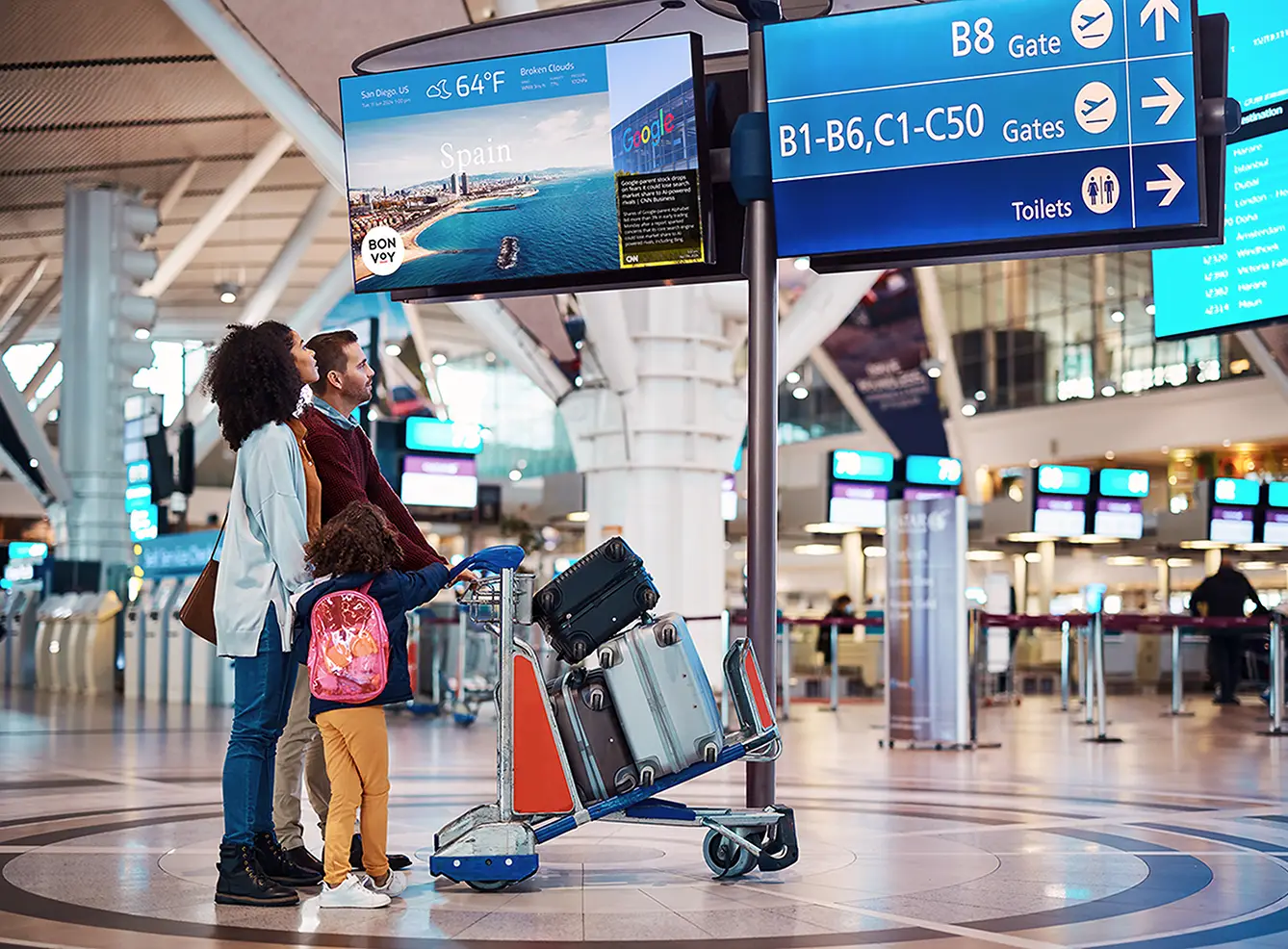
Medium and large organizations that manage sizable signage networks need more than basic scheduling tools. They require:
• Centralized Control – A unified platform to manage every display, schedule campaigns, and automate updates from headquarters.
• Scalable Security – Single sign-on, role-based permissions, and robust encryption to protect user data and content.
• Real-Time Monitoring – Dashboards to track screen status, receive alerts on device health, and measure proof-of-play metrics.
• Integrated Data Feeds – APIs and pre-built integrations to connect with POS systems, CRM platforms, and other enterprise tools.
• Flexible Deployment – Options for cloud-based, on-premises, or hybrid setups, depending on compliance requirements.
TelemetryTV’s digital signage software exemplifies this enterprise-ready model. It helps retail, banking, and QSR networks orchestrate hundreds or thousands of screens from a single interface. Administrators can update promotions, push emergency alerts, and dynamically tailor content using real-time data. The platform’s SOC 2 compliance, role-based user management, and secure content distribution ensure strict governance and minimal risk. TelemetryTV also supports deeper integrations—for instance, linking signage to a bank’s queue system or a retailer’s inventory database.
Boston Consulting Group (BCG) uses TelemetryTV to share dynamic dashboards and mission-critical content at offices worldwide. Carvana, known for its car vending machines, relies on interactive displays for immersive showroom experiences. Enterprises choose TelemetryTV for its ease of use, capabilities, and security.
Moving Forward with Digital Signage

For enterprises that want to stand out in today’s competitive landscape, digital signage has become a central pillar of communication. It offers an immersive channel that bridges physical and digital brand experiences, fuels omnichannel strategies, and meets evolving customer expectations. In industries like retail, banking, and QSR, the right digital signage software can yield measurable gains: higher sales, shorter perceived wait times, and stronger brand loyalty.
The future looks even more promising. Artificial intelligence will drive more nuanced personalization, while emerging technologies like interactive touchscreens and motion sensors will invite deeper engagement. As supply chains and marketing campaigns grow more data-driven, enterprise signage networks will deliver the agility to adapt instantly. In that sense, investing in robust, secure, and scalable digital signage software is no longer an option—it’s a strategic must.
Unlock the Potential of Enterprise Digital Signage
Ready to explore these capabilities for yourself? Start for free with TelemetryTV’s digital signage software and see how modern screen networks can elevate your enterprise, whether you’re serving customers, employees, or both.
Start for Free